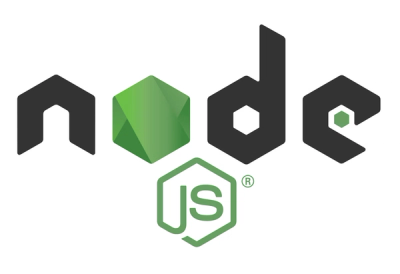
Security News
ECMAScript 2025 Finalized with Iterator Helpers, Set Methods, RegExp.escape, and More
ECMAScript 2025 introduces Iterator Helpers, Set methods, JSON modules, and more in its latest spec update approved by Ecma in June 2025.
dark-mode-toggle
Advanced tools
<dark-mode-toggle> ElementA custom element that allows you to easily put a Dark Mode 🌒 toggle or switch
on your site, so you can initially adhere to your users' preferences according
to
prefers-color-scheme,
but also allow them to (optionally permanently) override their system setting
for just your site.
📚 Read all(!) about dark mode in the related article Hello Darkness, My Old Friend.
Install from npm:
npm install --save dark-mode-toggle
Or, alternatively, use a <script type="module"> tag (served from unpkg's CDN):
<script type="module" src="https://unpkg.com/dark-mode-toggle"></script>

(See the original HD version so you can pause.)
There are three ways how you can use <dark-mode-toggle>:
The custom element assumes that you have organized your CSS in different files
that you load conditionally based on the media attribute in the
stylesheet's corresponding link element. This is a great performance pattern,
as you don't force people to download CSS that they don't need based on their
current theme preference, yet non-matching stylesheets still get loaded, but
don't compete for bandwidth in the critical rendering path. You can also have
more than one file per theme. The example below illustrates the principle.
<head>
<link rel="stylesheet" href="common.css" />
<link
rel="stylesheet"
href="light.css"
media="(prefers-color-scheme: light)"
/>
<link rel="stylesheet" href="dark.css" media="(prefers-color-scheme: dark)" />
<script
type="module"
src="https://googlechromelabs.github.io/dark-mode-toggle/src/dark-mode-toggle.mjs"
></script>
</head>
<!-- ... -->
<main>
<h1>Hi there</h1>
<img
src="https://googlechromelabs.github.io/dark-mode-toggle/demo/cat.jpg"
alt="Sitting cat in front of a tree"
width="320"
height="195"
/>
<p>Check out the dark mode toggle in the upper right corner!</p>
</main>
<aside>
<dark-mode-toggle
id="dark-mode-toggle-1"
legend="Theme Switcher"
appearance="switch"
dark="Dark"
light="Light"
remember="Remember this"
></dark-mode-toggle>
</aside>
The above method might cause flashing
(#77) when the
page loads, as the dark mode toggle module is loaded after the page is rendered.
A loader script can be used to apply the saved theme before the page is
rendered. Wrap the stylesheet tags with
<noscript id="dark-mode-toggle-stylesheets">...</noscript> and add the loader
script as follows:
<head>
<link rel="stylesheet" href="common.css" />
<noscript id="dark-mode-toggle-stylesheets">
<link
rel="stylesheet"
href="light.css"
media="(prefers-color-scheme: light)"
/>
<link
rel="stylesheet"
href="dark.css"
media="(prefers-color-scheme: dark)"
/>
<meta name="color-scheme" content="dark light" />
</noscript>
<script src="https://googlechromelabs.github.io/dark-mode-toggle/src/dark-mode-toggle-stylesheets-loader.js"></script>
<script
type="module"
src="https://googlechromelabs.github.io/dark-mode-toggle/src/dark-mode-toggle.mjs"
></script>
</head>
<!-- ... -->
If you prefer to not split your CSS in different files based on the color
scheme, you can instead work with a class that you toggle, for example
class="dark". You can see this in action in
this demo.
import * as DarkModeToggle from 'https://googlechromelabs.github.io/dark-mode-toggle/src/dark-mode-toggle.mjs';
const toggle = document.querySelector('dark-mode-toggle');
const body = document.body;
// Set or remove the `dark` class the first time.
toggle.mode === 'dark'
? body.classList.add('dark')
: body.classList.remove('dark');
// Listen for toggle changes (which includes `prefers-color-scheme` changes)
// and toggle the `dark` class accordingly.
toggle.addEventListener('colorschemechange', () => {
body.classList.toggle('dark', toggle.mode === 'dark');
});
This approach allows you to define styles directly within your HTML using
<style> tags, scoped to specific color schemes.
⚠️ Warning
Internal stylesheets do not benefit from the loading optimizations provided by
<link> elements, which may increase the page's initial load time.
<head>
<style media="(prefers-color-scheme: light)">
body {
background-color: #ffffff;
color: #000000;
}
</style>
<style media="(prefers-color-scheme: dark)">
body {
background-color: #000000;
color: #ffffff;
}
</style>
<script
type="module"
src="https://googlechromelabs.github.io/dark-mode-toggle/src/dark-mode-toggle.mjs"
></script>
</head>
<!-- ... -->
See the custom element in action in the
interactive demo.
It shows four different kinds of synchronized <dark-mode-toggle>s. If you use
Chrome on an Android device, pay attention to the address bar's theme color, and
also note how the favicon changes.


Properties can be set directly on the custom element at creation time, or dynamically via JavaScript.
👉 Note that the dark and light icons are set via CSS variables, see Style Customization below.
| Name | Required | Values | Default | Description |
|---|---|---|---|---|
mode | No | Any of "dark" or "light" | Defaults to whatever the user's preferred color scheme is according to prefers-color-scheme, or "light" if the user's browser doesn't support the media query. | If set overrides the user's preferred color scheme. |
appearance | No | Any of "toggle" or "switch" | Defaults to "toggle". | The "switch" appearance conveys the idea of a theme switcher (light/dark), whereas "toggle" conveys the idea of a dark mode toggle (on/off). |
permanent | No | true if present | Defaults to not remember the last choice. | If present remembers the last selected mode ("dark" or "light"), which allows the user to permanently override their usual preferred color scheme. |
legend | No | Any string | Defaults to no legend. | Any string value that represents the legend for the toggle or switch. |
light | No | Any string | Defaults to no label. | Any string value that represents the label for the "light" mode. |
dark | No | Any string | Defaults to no label. | Any string value that represents the label for the "dark" mode. |
remember | No | Any string | Defaults to no label. | Any string value that represents the label for the "remember the last selected mode" functionality. |
colorschemechange: Fired when the color scheme gets changed.permanentcolorscheme: Fired when the color scheme should be permanently
remembered or not.Interacting with the custom element:
/* On the page */
const darkModeToggle = document.querySelector('dark-mode-toggle');
// Set the mode to dark
darkModeToggle.mode = 'dark';
// Set the mode to light
darkModeToggle.mode = 'light';
// Set the legend to "Dark Mode"
darkModeToggle.legend = 'Dark Mode';
// Set the light label to "off"
darkModeToggle.light = 'off';
// Set the dark label to "on"
darkModeToggle.dark = 'on';
// Set the appearance to resemble a switch (theme: light/dark)
darkModeToggle.appearance = 'switch';
// Set the appearance to resemble a toggle (dark mode: on/off)
darkModeToggle.appearance = 'toggle';
// Set a "remember the last selected mode" label
darkModeToggle.remember = 'Remember this';
// Remember the user's last color scheme choice
darkModeToggle.setAttribute('permanent', '');
// Forget the user's last color scheme choice
darkModeToggle.removeAttribute('permanent');
Reacting on color scheme changes:
/* On the page */
document.addEventListener('colorschemechange', (e) => {
console.log(`Color scheme changed to ${e.detail.colorScheme}.`);
});
Reacting on "remember the last selected mode" functionality changes:
/* On the page */
document.addEventListener('permanentcolorscheme', (e) => {
console.log(
`${e.detail.permanent ? 'R' : 'Not r'}emembering the last selected mode.`,
);
});
You can style the custom element with
::part(). See the
demo's
CSS source code
for some concrete examples. The exposed parts and their names can be seen below:
<form part="form">
<fieldset part="fieldset">
<legend part="legend"></legend>
<input part="lightRadio" id="l" name="mode" type="radio" />
<label part="lightLabel" for="l"></label>
<input part="darkRadio" id="d" name="mode" type="radio" />
<label part="darkLabel" for="d"></label>
<input part="toggleCheckbox" id="t" type="checkbox" />
<label part="toggleLabel" for="t"></label>
<aside part="aside">
<input part="permanentCheckbox" id="p" type="checkbox" />
<label part="permanentLabel" for="p"></label>
</aside>
</fieldset>
</form>
Additionally, you can use a number of exposed CSS variables, as listed in the following:
| CSS Variable Name | Default | Description |
|---|---|---|
--dark-mode-toggle-light-icon | No icon | The icon for the light state in background-image: notation. |
--dark-mode-toggle-dark-icon | No icon | The icon for the dark state in background-image: notation. |
--dark-mode-toggle-icon-size | 1rem | The icon size in CSS length data type notation. |
--dark-mode-toggle-remember-icon-checked | No icon | The icon for the checked "remember the last selected mode" functionality in background-image: notation. |
--dark-mode-toggle-remember-icon-unchecked | No icon | The icon for the unchecked "remember the last selected mode" functionality in background-image: notation. |
--dark-mode-toggle-color | User-Agent stylesheet text color | The main text color in color: notation. |
--dark-mode-toggle-background-color | User-Agent stylesheet background color | The main background color in background-color: notation. |
--dark-mode-toggle-legend-font | User-Agent <legend> font | The font of the legend in shorthand font: notation. |
--dark-mode-toggle-label-font | User-Agent <label> font | The font of the labels in shorthand font: notation. |
--dark-mode-toggle-remember-font | User-Agent <label> font | The font of the "remember the last selected mode" functionality label in shorthand font: notation. |
--dark-mode-toggle-icon-filter | No filter | The filter for the dark icon (so you can use all black or all white icons and just invert one of them) in filter: notation. |
--dark-mode-toggle-remember-filter | No filter | The filter for the "remember the last selected mode" functionality icon (so you can use all black or all white icons and just invert one of them) in filter: notation. |
--dark-mode-toggle-active-mode-background-color | No background color | The background color for the currently active mode in background-color: notation. |
<dark-mode-toggle>The core custom element code lives in
src/dark-mode-toggle.mjs.
You can start hacking and testing your changes by running npm run start and
then navigating to http://localhost:8080/demo/. No build step required 🎉,
this happens automatically upon npm publishing. If for whatever reason you
want to build locally, run npm run build. You can lint by running
npm run lint.
The HTML and the CSS used by <dark-mode-toggle> is hard-coded as a template
literal in the file src/dark-mode-toggle.mjs. For optimal performance, the
contents of this literal are hand-minified. If you need to tweak the HTML or the
CSS, find the unminified template literal contents in
src/template-contents.tpl and copy them over to src/dark-mode-toggle.mjs.
Once your changes are done, commit them to both the *.tpl file (in unminified
form) and the *.mjs file (in minified form).
(This is actually just making a strong argument for CSS Modules and HTML Modules that would allow for proper tools integration).
v8.dev: V8 is Google’s open source high-performance JavaScript and WebAssembly engine, written in C++.


Your site here…
This is not an official Google product.
Thanks to all
contributors
for making <dark-mode-toggle> even better! Usage video by
Tomek Sułkowski.
Copyright 2019 Google LLC
Licensed under the Apache License, Version 2.0 (the "License"); you may not use this file except in compliance with the License. You may obtain a copy of the License at
http://www.apache.org/licenses/LICENSE-2.0
Unless required by applicable law or agreed to in writing, software distributed under the License is distributed on an "AS IS" BASIS, WITHOUT WARRANTIES OR CONDITIONS OF ANY KIND, either express or implied. See the License for the specific language governing permissions and limitations under the License.
FAQs
Web Component that toggles dark mode 🌒
The npm package dark-mode-toggle receives a total of 245 weekly downloads. As such, dark-mode-toggle popularity was classified as not popular.
We found that dark-mode-toggle demonstrated a healthy version release cadence and project activity because the last version was released less than a year ago. It has 3 open source maintainers collaborating on the project.
Did you know?

Socket for GitHub automatically highlights issues in each pull request and monitors the health of all your open source dependencies. Discover the contents of your packages and block harmful activity before you install or update your dependencies.

Security News
ECMAScript 2025 introduces Iterator Helpers, Set methods, JSON modules, and more in its latest spec update approved by Ecma in June 2025.

Security News
A new Node.js homepage button linking to paid support for EOL versions has sparked a heated discussion among contributors and the wider community.

Research
North Korean threat actors linked to the Contagious Interview campaign return with 35 new malicious npm packages using a stealthy multi-stage malware loader.